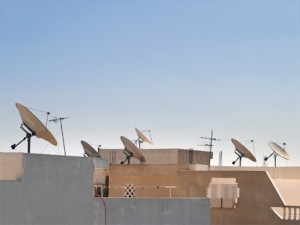Satellite reception in MENA continues to grow
 Homes with satellite TV reception in the Middle East and North Africa have increased by 7% over the last year to number 59 million, according to research by satellite operator Eutelsat.
Homes with satellite TV reception in the Middle East and North Africa have increased by 7% over the last year to number 59 million, according to research by satellite operator Eutelsat.
According to Eutelsat’s survey on TV trends in MENA, satellite TV reception in the region has continued to increase its market-share compared to terrestrial and IPTV and now reaches 94% of the 62.2 million TV homes in 14 Arab-speaking countries, up from 92% 12 months ago.
According to the satellite operator, the 7/8° West position it shares with Nilesat has reinforced its leadership in the market, reaching 56.2 million homes in the 14 countries, up 3.1 million in one year.
Eutelsat says that the HD channel offering at the slot has grown by 34% in a year to 179 channels out of a total of 1,200 services at the position.
The pace of adoption of HD is accelerating in the region, with HD-equipped homes now reaching 28.2 million, up from 17.7 million a year ago, now representing 46% of TV homes, according to Eutelsat. This percentage is higher at the Eutelsat/Nilesat 7/8° West position where 66% of homes own HD displays, according to the satellite operator.
“Our 2017 survey confirms the dominance of satellite as the preferred digital infrastructure across the Middle East and North Africa and highlights key trends, notably the increasing significance of High Definition broadcasting,” said Michel Azibert, chief commercial and development officer, Eutelsat.
“It also confirms the 7/8° West neighbourhood as the prime gateway for broadcasters, reaching into over 56 million homes from Morocco to the Gulf States. In addition to this capability, our complementary Hotbird neighbourhood broadcasts almost 80 Arabic channels, making it a compelling neighbourhood for reaching into millions of homes across Europe as well as in the Middle East and North Africa.”



